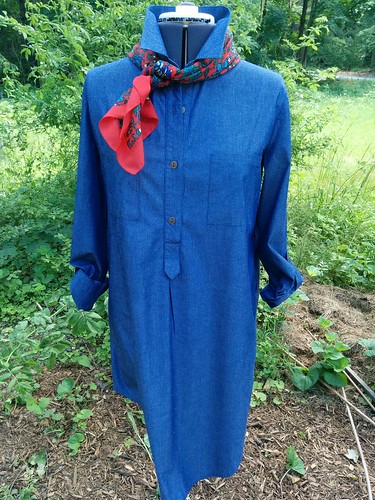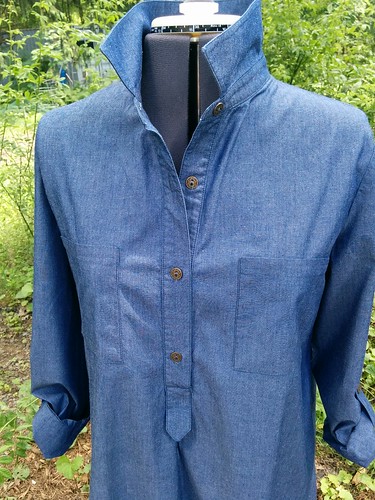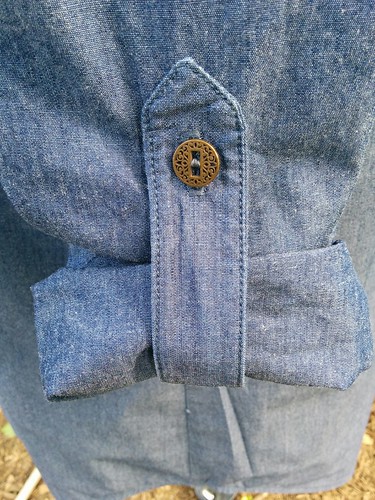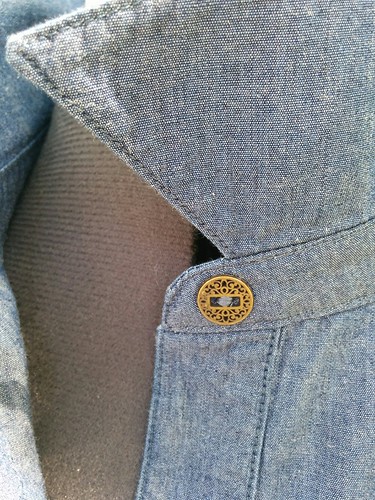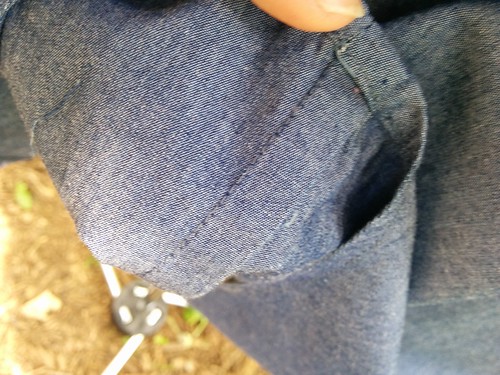On to less political/hot topics ... hemstitching! A few years ago, I purchased Fine Machine Sewing by Carol Ahles at a local sewing shop. To be honest, I bought it because of the pictures, not because I had a burning interest in heirloom sewing, which I associate with christening outfits and dresses for young girls.
But lately I've been thinking about how to give my sewing projects a little more oomph. I briefly investigated an embroidery machine, but I think if I were to embroider it would be in small doses i.e. by hand and very discreet. Plus, it's another machine that requires specialty threads and stabilizers, meaning a whole new line item of cost.
I started researching embellishment techniques I could do by hand or with one of my sewing machines, everything from smocking to sashiko. And then I remembered Ahles book in my sewing library...et voila!
As I reintroduced myself to the text and pictures, I noticed many of the photos were of store-bought plain linen blouses that had been embellished by the author. I enjoy making blouses, but did I want to practice machine hemstitching on something I'd spent hours creating, only to ruin it with a poorly executed pivot? After all, hemstitching creates holes in a garment, holes you cannot hide or fix. The holes are created with a specialty needle called a wing needle, which has "wings" on either side of the tip that push fibers to the side and create a very visible opening. I decided the best course of action was to do a bit of practice on some linen in my stash and then follow-up with some practice on a store-bought garment.
I scored this week at our (semi) local Savers: an ecru Liz Claiborne linen blouse, size medium.
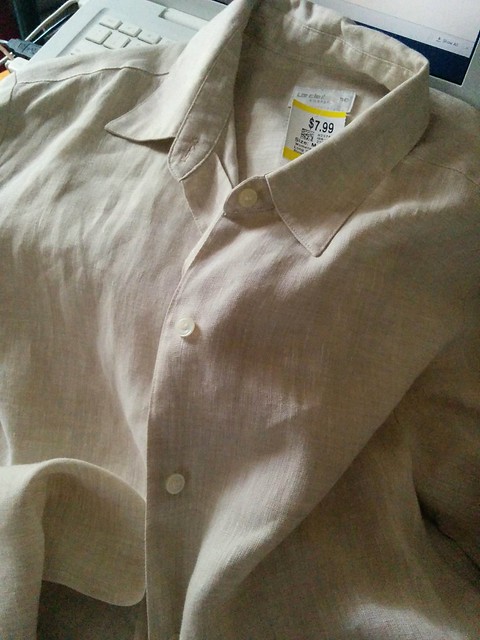
My original plan was to dye the blouse navy blue as there's a grease stain on the back shirt-tail and I thought the ecru color would wash me out, but I guess ecru is one of my "colors" -- it really flattered my complexion more than I thought it would. So plan B was to keep it undyed and remove the stain with my Dawn dish detergent and a sturdy brush, which never lets me down. If Dawn can take crude oil off sea birds, it can handle oil on clothing, I say. The other benefit to plan B was that mistakes would be harder to see on an ecru blouse hemstitched with white thread than a navy blue blouse stitched in white.
I decided to use a Parisian hemstitch, which is commonly used on linen napkins and table cloths, as well as clothing. It's elegant and subdued, and it was easier getting a good result pivoting around the very visible collar point. I did quite a bit of practice on scrap linen before I attempted the cuffs:
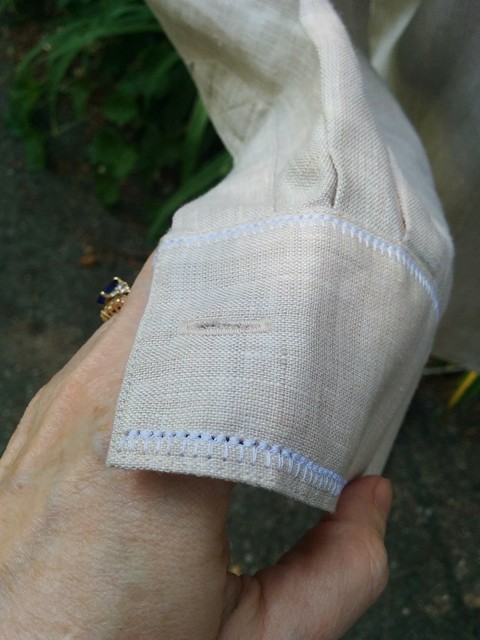
I would have liked to stitch around the whole cuff but I would have cut into the buttonholes. I noticed halfway through the first cuff that I'd inadvertently reset the stitch length and width I planned to use to the machine's preset stitch length/widths. Grr. But I was committed at this juncture, so I carried on.
Next, the collar:
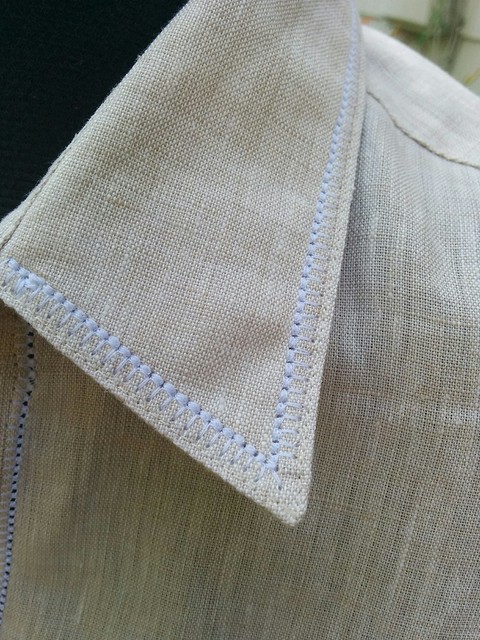
Here, I noticed that the holes were less pronounced and the thread was thicker on the inside row of stitching than they were on the cuffs. It was okay though; I liked the result and I managed to pivot around those collar points like a pro. ;-)
Emboldened by my success with the collar, I decided to add hemstitching down the sides of the front plackets:

I was very happy with how this turned out. The holes were visible and the thread wasn't bunched up as much as it was on the collar and cuffs. It looked like true hemstitching.
Here's a picture of the "refashioned" blouse:

(You'll have to click on the photo to zoom it; the stitching isn't very visible at this resolution.)
I'm very happy with how this turned out. I don't think anyone will walk up to me and say, "Wow, what fantastic hemstitching! Where did you get that blouse?" but it really gives a very simple blouse a much more elegant look that *I* will appreciate.
My plan now is to continue sleuthing thrift shops for linen blouses that I can play with before I attempt sewing my dream blouse: white linen hemstitched in delft blue thread. I would also like a French blue blouse hemstitched in white ... and gray one, too.
I also scored in a different area at Saver's this week ... I found a copy of Connie Long's Easy Guide to Sewing Linings, which is out of print and can be expensive on Amazon. I got it for $2.99. :)

